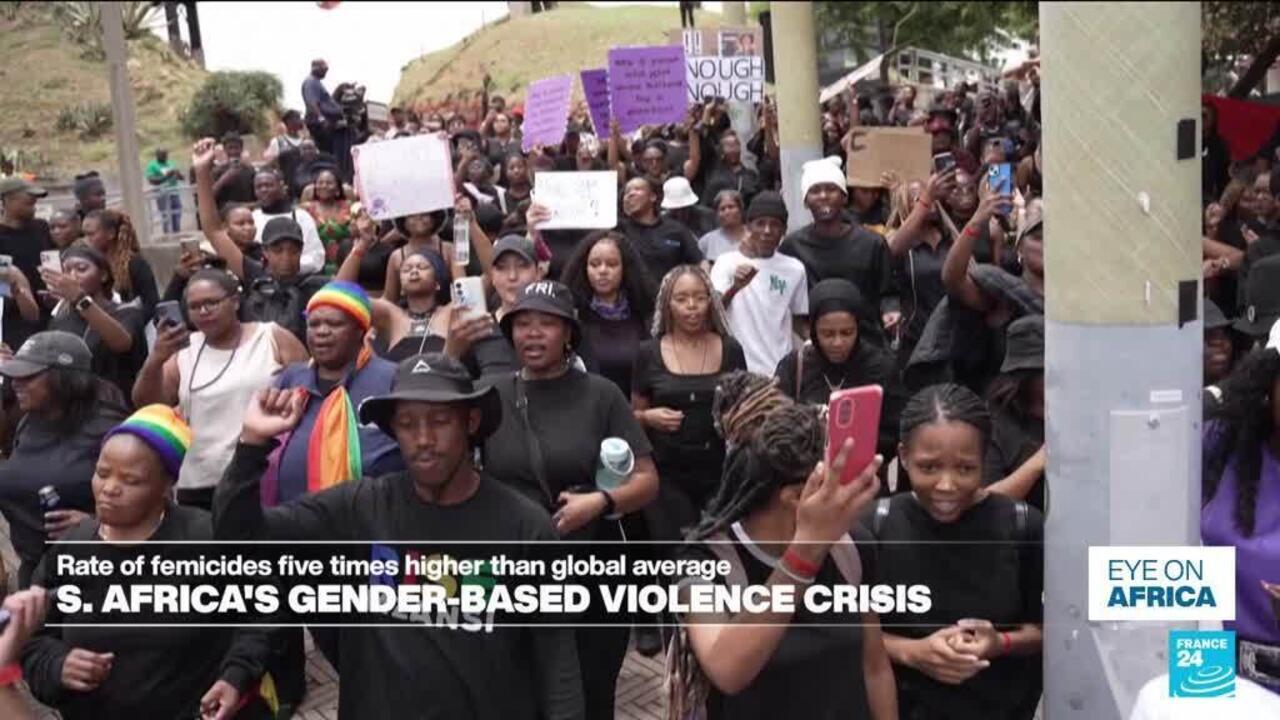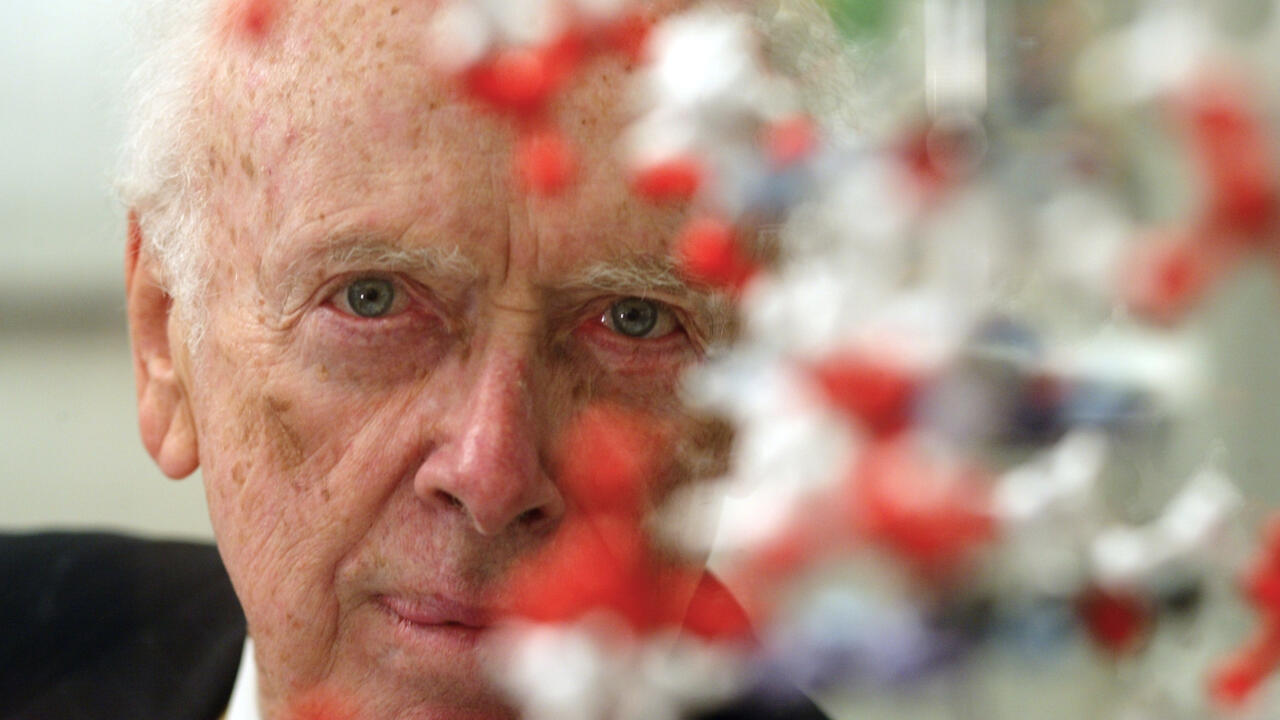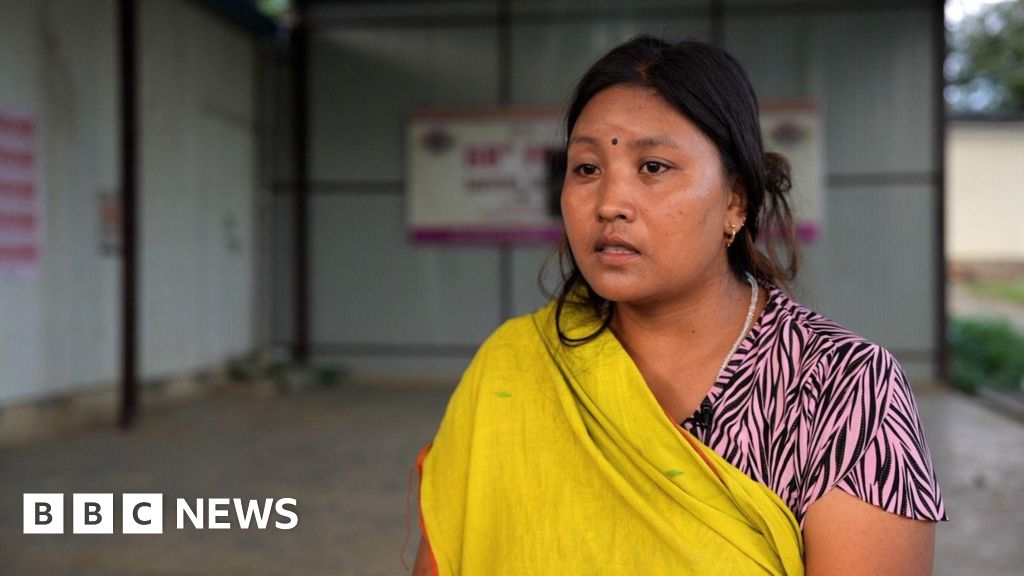 Tsholofelo Msimango pictured at her home in Brakpan, near Johannesburg. Credit: TB Alliance/Jonathan Torgovnik
Tsholofelo Msimango pictured at her home in Brakpan, near Johannesburg. Credit: TB Alliance/Jonathan TorgovnikBRATISLAVA, October 20 (IPS) - When Tsholofelo Msimango joined a small trial of a new drug regimen for tuberculosis (TB) treatment a decade ago, she had no idea whether the medicines she was about to be given would help her.
But having already spent six months in hospital after developing extensively drug-resistant TB (XDR-TB), the most lethal form of the disease, which at the time was barely curable—three-quarters of people with XDR-TB were thought to die before they even received a diagnosis and only a third of those who got treatment survived—Msimango decided she had little to lose.
“I had my doubts, of course, as to whether it would have any success,” she tells IPS. “But to be honest, at that point all I could think about was that it might make me better, that I might be able to get out of hospital and go home. I was ready to take that chance. I’m glad I did. That trial saved my life—I am sure of it,” she says.
Msimango, who was 21 at the time, from Brakpan in South Africa, was one of 109 participants in the Nix-TB trial of a new drug regimen that ran across three sites in the country between 2015 and 2017.
Until then, typical treatment for the most severe drug-resistant forms of TB would involve patients taking daily doses of a potent cocktail of pills—dozens in some cases—as well as injections for sometimes as long as two years.
The side effects of such regimens can be horrific—deafness, kidney failure and psychosis have been reported—and there are high rates of treatment drop-out, leading not only to a worsening of the patient’s own condition but also to the further spread of the worst strains of the disease among communities.
The Nix-TB trial tested an all-oral six-month drug regimen, which was a combination of the drugs pretomanid, bedaquiline and linezolid (BPaL).
Its results—the regimen had a 90 percent treatment success rate —werehailed as groundbreaking by experts, and the trial proved to be a landmark moment in the fight against the world’s most deadly infectious disease.
Msimango says that until she joined the trial, she had been taking “lots of pills and having injections.” The latter, she says, had stopped working against the disease and was leaving her legs completely numb.
But not long into the trial, she noticed a change. Before the trial she had struggled to keep weight on because of her illness and treatment.
“It was when I started to gain weight that I began to think that the treatment was working. We had check-ups, including for weight, every week and when I saw myself putting on weight, I knew then that I was getting better,” she says.
By the end of the trial, she says she felt like a different person.
Tests showed she was free of TB.
“Of course I was excited about the fact that I could finally stop taking medicines, and because I was then healthy and free of TB and could live a normal life again, but I was also excited about the fact that I was going to be able to finally leave hospital after a year and go home.
“I had already been in hospital for six months before the trial started, and then another six months for the trial, and it was hard being away from home for a year. The hospital was a long way from where I lived so it was very hard for my mother to come and visit me and bring me things,” she says.
 Tsholofelo Msimango and her son at her home in Brakpan, near
Tsholofelo Msimango and her son at her home in Brakpan, nearJohannesburg. Credit: TB Alliance/Jonathan Torgovnik
But while now healthy and free of TB, the disease has continued to play a large role in Msimango’s life.
She decided she wanted to help others affected by TB. Today she is a TB community advocate and educator and helps to recruit people for medical studies.
“I would recommend to anyone that if they get the chance to take part in a study like the one that I got to take part in, that they should go for it,” she says.
Now a mother to a young boy, she says she speaks to him about what she went through and about TB so that he understands about the disease and the risks it poses.
“I talk to my son about what happened to me, why I was in hospital and why I now work in the TB community. I tell my son and his friends about TB and what can be done to stop its spread and how they can help, for instance, by covering their mouths when they cough,” she says.
“Actually, I tell my story a lot because I hope it might help other people,” she adds.
Another participant in the trial, Bongiswa Mdaka, says the same.
“I talk to people all the time about TB and my experience with it—I’m very open about it. If I see someone has been coughing for more than two weeks, I tell them about the disease and about getting tested and treated as early as possible,” she told IPS.
Speaking from her home in Vereeniging, Gauteng, Mdaka, who was 27 when she started the trial, said that, like Msimango, it changed her life.
“The trial was a lifesaver for me. It not only changed my life but saved it. It gave me a second chance. Ten years ago, before the trial, the situation for people with XDR-TB was not good. I was diagnosed with MDR-TB and when my condition continued to get worse, I was hospitalized. I was in the hospital for three days and they told me that no, I don’t have MDR-TB; I have ZDR-TB, the worst I could have. It was like hearing a death sentence.
 Tsholofelo Msimango’s late mother, Zeldah Nkosi. She says her mother was a “pillar of support” during her time when she had TB. Credit: TB Alliance
Tsholofelo Msimango’s late mother, Zeldah Nkosi. She says her mother was a “pillar of support” during her time when she had TB. Credit: TB Alliance“So when the people doing the trial came to me, it seemed like a godsend. I had no major expectations—I just hoped that I would get better. Today I am healthy and free of TB. I’m strong. I have a family and a normal life. Life is good,” she said.
Speaking to experts who were involved in the trial, it becomes clear that going into it, no one knew how important it would eventually prove to be in the future of TB treatment.
Dr. Pauline Howell managed the patients during the Nix-TB trial at the Sizwe Tropical Diseases Hospital in Johannesburg, where Msimango was a patient.
“Prior to the Nix trial we knew that treatment was too long, too toxic, worked in less than half of people afflicted with TB, and in those diagnosed with XDR TB (per the pre-2021 definition), only 20 percent were still alive after 5 years. I was still junior in clinical trials in 2015, but it was clear to everyone that knew anything about XDR-TB that replacing the extended treatment, which included at least 6 months of injectables, and all the other drugs (the kitchen sink approach) with just three drugs made us more than a little anxious,” she told IPS.
But like many of the trial’s participants, she saw relatively quickly how well the treatment was working.
“When trial participants started telling newly admitted patients about this trial and brought them to the research site before we had had a chance to speak with them, that was speaking loudly. When certain patients, who had been admitted for over two years, were suddenly starting to respond to TB treatment and culture convert, it was wonderful to celebrate with them, Howell, who is now Clinical Research Site Leader at Sizwe Tropical Disease Hospital, said. “When patients were relocating from the Eastern Cape to Gauteng just to get access to the trial, we knew this was the treatment we’d also want for ourselves and our loved ones.”
“There are definitely a few [trial participants] who may not have survived without this treatment, but for the majority, they were able to get back to their lives faster, potentially cause fewer onward infections and suffer less loneliness and other repercussions of having drug-resistant TB,” she added.
However, while the trial had an immediate effect on its participants, its results, which suggested the enormous potential of the regimen, paved the way for BPaL to revolutionize TB treatment.
“I had no idea that this trial would be the first step towards changing the treatment for drug-resistant tuberculosis worldwide,” Howell said.
“It’s good to remember that although TB is deadly, it is curable, and the side effects of the BPaL/M regimen are common but predictable and manageable. A decade ago, patients put an end to rental agreements for their homes, quit their jobs, told their partners to move on and their families took out funeral policies. These days, patients sit in front of me and say, ‘I have been here for two weeks already! I need to get home and back to my life’. It makes my head spin how much has changed, partially due to the Nix trial,” she added.
In 2022, the World Health Organization (WHO) endorsed BPaL with or without another drug, moxifloxacin (M), and BPaL(M) is today the preferred treatment option for drug-resistant TB.
According to data from the TB Alliance, the nonprofit group that developed pretomanid, BPaL and BPaL-based regimens, they treat about 75 percent of the overall number of drug-resistant TB cases treated annually. This number is projected to soon reach 90 percent.
Meanwhile, the group says, the regimens have already saved more than 11,000 lives and USD 100 million for health systems globally and by 2034 are expected to save an additional 192,000 lives and health systems almost USD 1.3 billion.
In some countries classed as having high-burden TB epidemics, they have already altered the TB landscape significantly.
“In South Africa, which adopted the BPaL/M guidelines in Sep 2023, we are seeing a single-digit percentage lost to follow-up for the first time in the history of our TB programme,” she says.
But the regimen’s potential may be in danger of not being fully fulfilled as richer nations cut foreign aid budgets, impacting funding that has traditionally helped support disease and other healthcare programmes in poor countries.
“The eternal challenge with TB is how closely it is tied to lack of access, poverty, substance use, being undomiciled and general lack of funding to overcome these challenges… Unfortunately, as long as there is poverty and lack of access, political will and funding, TB will continue to live side by side with us,” said Howell.
“Some people now can’t get their medications because of these cuts,” said Msimango. “They’re costing people’s lives.”
Note: This article is brought to you by IPS Noram in collaboration with INPS Japan and Soka Gakkai International in consultative status with ECOSOC.
IPS UN Bureau Report
© Inter Press Service (20251020072212) — All Rights Reserved. Original source: Inter Press Service

 1 month ago
15
1 month ago
15










 English (US) ·
English (US) ·